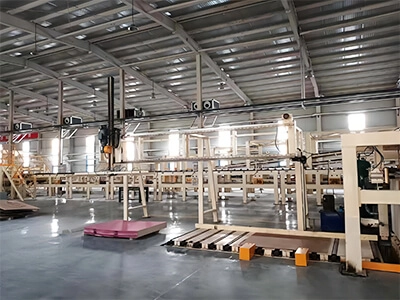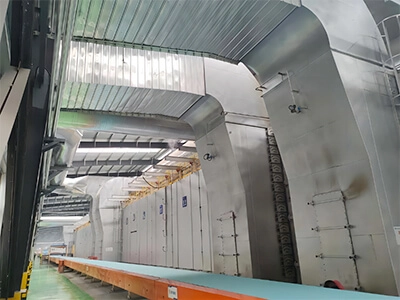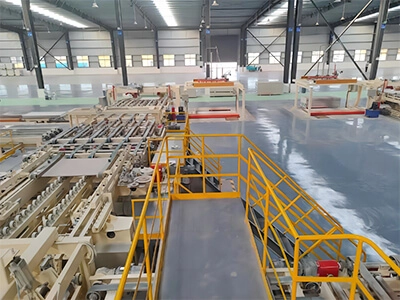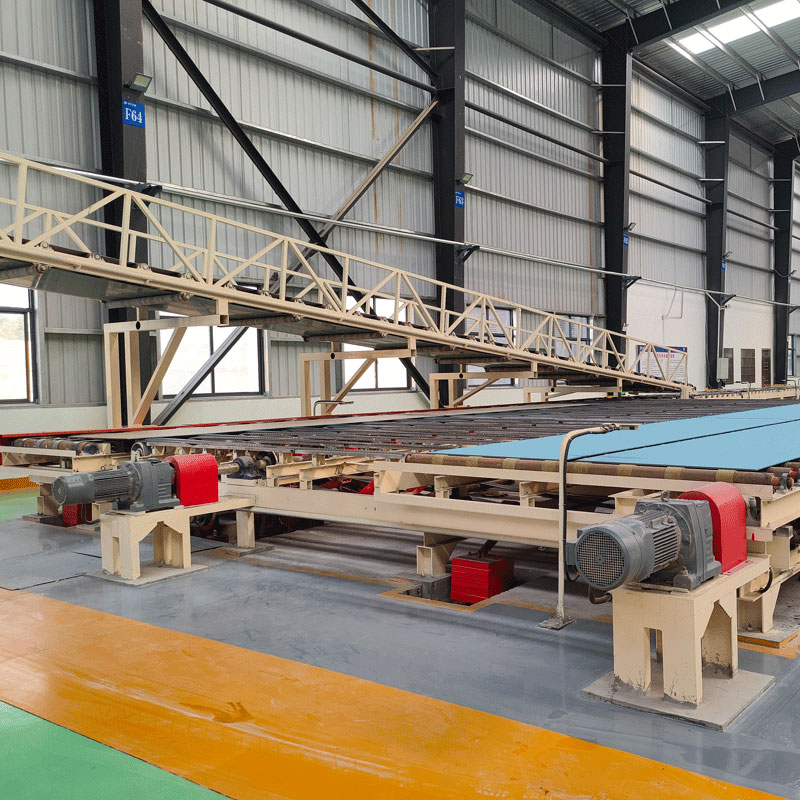
Gypsum Board Machine Factory

Paper Faced Gypsum Board Machinery

Produce Gypsum Board

Paper Faced Gypsum Board Production Line
After rising from the drying oven, the dry wall panels are visually inspected earlier than being bundled into "lifts" of 30 or forty boards and transferred to the warehouse to watch for shipment. Each board is labeled with a UPC bar code that is used for warehouse inventory, billing, and charge scanning at the retail level.
The face paper is wrapped snugly round every part and sealed to the lower back paper.
Cutting the panels
By the time the edges have been shaped, the plaster core has set sufficiently for a knife to slice the non-stop strip into popular panel sizes. The board, typically forty eight inches (1219 mm) or fifty four inches (1572 mm) wide, is typically reduce into panels that are eight toes (2400 mm) or 12 toes (3600 mm) long.

The drying process
The panels are transferred to a conveyor line that feeds them thru a long, drying oven. At one plant, for example, the gas-fired oven is 470 toes (143 m) long. Panels enter the oven at 500°F (260°C) and are uncovered to regularly reducing ranges of warmness throughout the 35-40 minutes they tour via the system. Humidity and temperature are cautiously managed in the dryer.
Product Evolution
Since the invention of gypsum board at the flip of the century, there has been gradual growth in making it lighter in weight whilst enhancing its overall performance characteristics. In the late 1950s, trendy gypsum board (not fire-rated) weighed two kilos per rectangular foot (9.8 kg per sq m); the a variety of sorts of preferred gypsum board now common about 1.6 kilos per rectangular foot (8 kg per sq m). This now not solely makes dealing with and set up easier, however decreases delivery expenses as well.